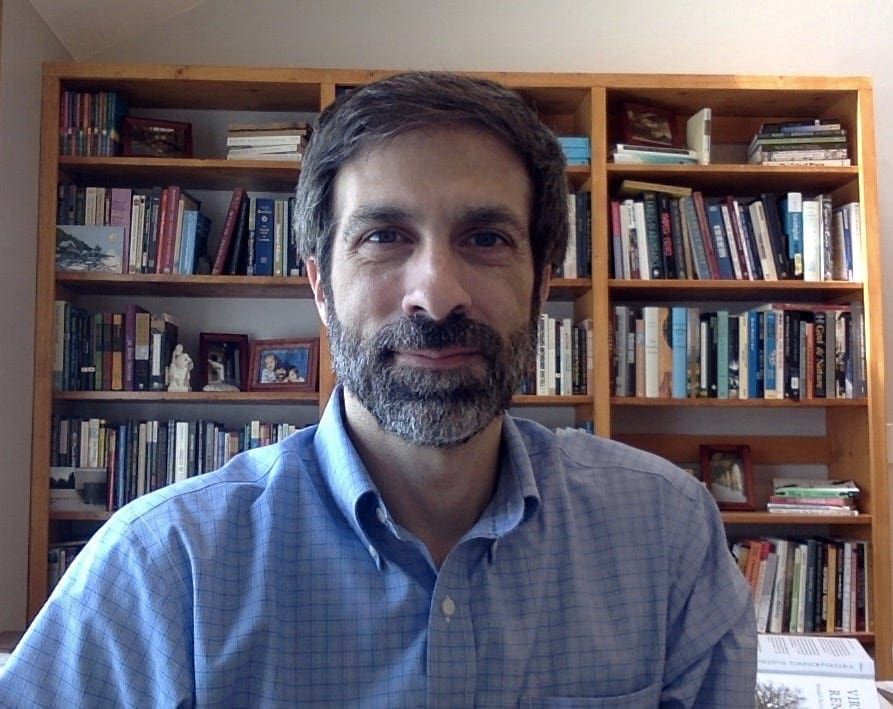F
Few questions, it seems, are more important for us to consider at present than this: What does it mean to be human? But it is a perennial question, asked by thoughtful people for ages and answered in diverse and conflicting ways. The stakes have always been high, and no single answer can be taken for granted. In our time the question has centred at least in part on the possibility of fundamentally transforming the human being by the application of human knowledge and power. Indeed, it is not uncommon to encounter explicit calls for a post-human future, one in which the human condition is radically altered or altogether transcended. At the same time, however, others warn of the possibility that we might descend from rather than transcend the human condition. The usual agent of change in each case, enabling either the utopian ascent or the infernal descent of humankind, is “technology.” Rather than adjudicating among these competing visions or proposing a full account of the meaning of the human, I want to focus on one seemingly neglected human capacity, which may not exclusively define the human but which certainly characterizes it: the capacity for wonder. Particularly, I want to focus on two questions: How has our technological milieu affected our capacity to experience wonder? And how, in turn, has this affected how we think about the human condition?
Wonder and Numbness
The Jewish philosopher Abraham Heschel once observed that “being human is both a fact and a demand. Our being human is always on trial, full of risk, precarious; man is always in danger of forfeiting his humanity.” There is, admittedly, a certain danger in putting matters this way. Although Heschel writes of being human as both fact and demand, it may be too easy to hear only that it is a demand and subsequently conclude that certain people fail to meet it. But this is certainly not what he intended. Heschel would have us consider the possibility that we may fail to live up to our status as human beings—a status we already possess. Writing in the mid-twentieth century, he was concerned about dehumanizing forces that undermine our capacity to flourish in the fullness of our humanity. Taking this possibility as my point of departure, I propose that our technological milieu has generated an environment that is inhospitable to the experience of wonder, an experience foundational to the pursuit of the highest human aspirations.
Wonder is what happens when we unexpectedly apprehend the marvellous quality of the ordinary.
Wonder, in fact, has long been thought to be central to the task of philosophy. In his 1966 lecture “A Philosophy of Wonder,” philosopher Howard Parsons writes, “Wondering is an essential characteristic of man, who is a creature of a universe that has brought him forth and that in its many aspects evokes his wonder.” He adds that “a philosophy of wonder would implicitly be a philosophy of man and the universe; and such a philosophy men will continue to work at as long as they seem worthy of wondering and the universe seems worthy of their wonder.” Roughly twenty-three hundred years earlier, Plato’s Socrates similarly claimed in the Theaetetus that philosophy itself begins in wonder. In the same spirit, Roman Catholic philosopher Josef Pieper, in his classic work Leisure: The Basis of Culture, likewise argues that “the ability to experience wonder is one of the highest possibilities of human nature.” But Pieper, like Heschel also writing in the mid-twentieth century, was already less than sanguine about the fate of wonder in the modern world: “‘Wonder’ is no longer there, it has no place to come from; the human being can no longer feel wonder.”
“Wonder” is a common word with various shades of meaning. The wonder that Parsons and Pieper had in mind, the wonder that is at the heart of ancient philosophy, is more than the casual inquisitiveness suggested by the phrase “I wonder why”—though a casual inquisitiveness may lead to a more profound experience of wonder. And it is also true that experiences of wonder may initiate a quest for understanding. Wonder shares certain characteristics with awe or the experience of the sublime, but it does not necessarily have the sliver of terror these words imply. Wonder is experienced as an interruption of our ordinary expectations or usual way of seeing the world. Wonder arises when the commonplace becomes suddenly perplexing or the ordinary takes on an extraordinary quality. It is an encounter with the gratuity of being. Wonder of this sort marvels at the precarious particularity of its object. The giving of thanks is often the most immediate consequence. As G.K. Chesterton once put it, “Gratitude is happiness doubled by wonder.” Such wonder may also yield reverence, humility, and respect for its source. It may be occasioned by the marvellous or by the mundane. Or perhaps it would be better to say that wonder is what happens when we unexpectedly apprehend the marvellous quality of the ordinary or when the previously unperceived depths of reality reveal themselves.
In his effort to lay a foundation for a philosophy of wonder, Parsons notes that “what makes ordinary experience ‘ordinary’ is the flattening out of the wild, erratic flora and protruding peaks and outcroppings—by blueprints, bulldozers, superhighways.” He goes on to say that “conceptualization, the instrumental attitude toward things, the development of mechanized habits, the creating and application of classes, with abstract types and subtypes of particular things—all contribute to extinguishing from awareness the qualitative uniqueness of things and hence the experience of wonder.” Parsons’s mid-twentieth-century observations already suggest that technological modernity undermines our capacity to experience wonder. Early in the twenty-first century, we should consider how wonder fares under the conditions of digital culture.
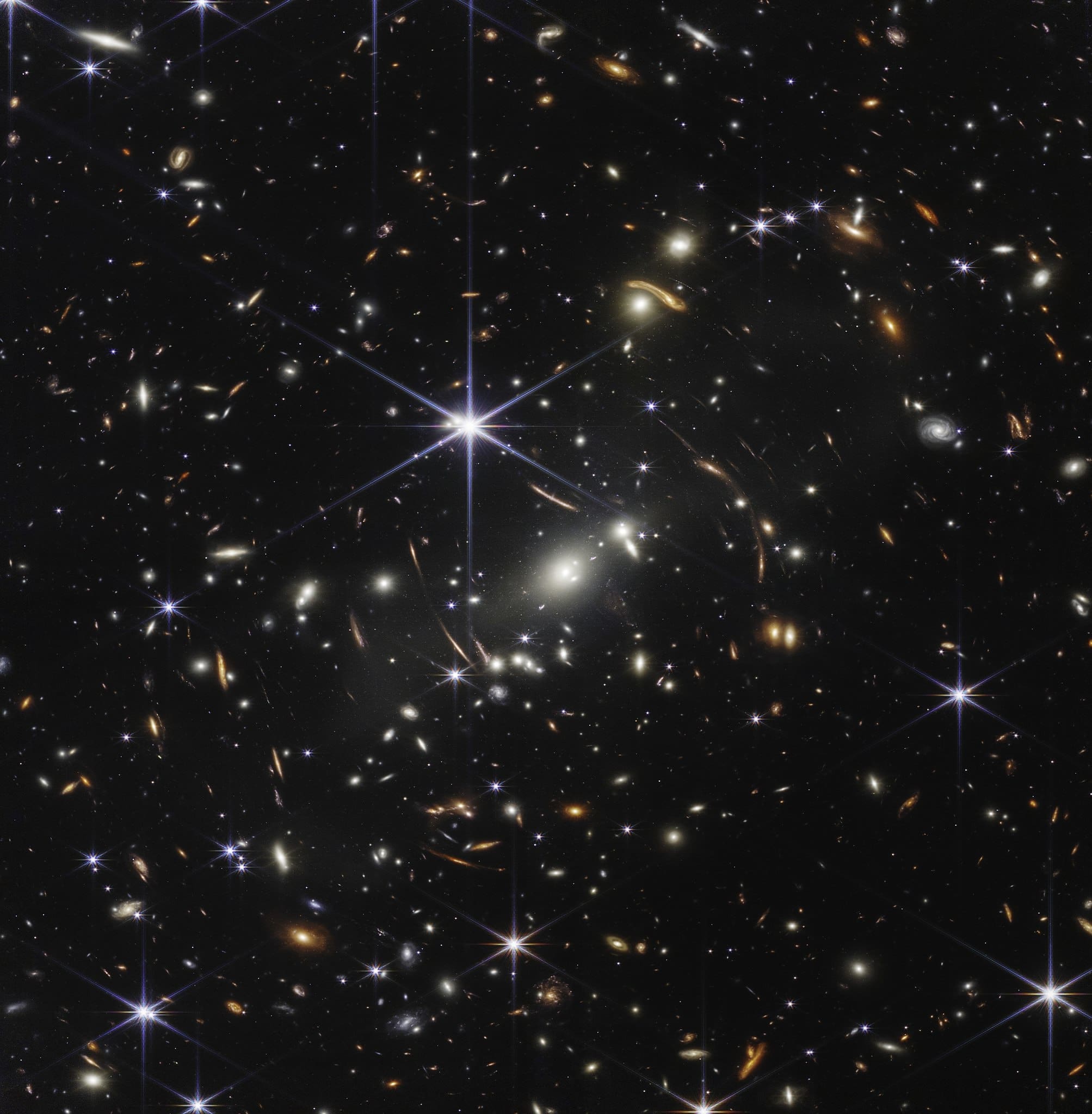
Image by James Webb Space Telescope, NASA, 2022.
In July of this year, the first images captured by the James Webb Space Telescope were released to the public. They included shots of distant galaxies and star-birthing nebulae. The clarity and colour of the remarkable images marked a decided advance on the images produced by the Hubble Space Telescope, which was launched in 1990. To no one’s surprise, the Webb images were widely shared and discussed on social media. But fleetingly so. Even these unparalleled images of the universe could not withstand the relentless flow of the timeline. But I was also struck by what I experienced as a disconcerting numbness in response to these images, images that one might have expected to provoke a sense of wonder.
It’s a perilous business to generalize from one’s own experience, of course, especially when the experience under consideration might just as easily be interpreted as a personal failure. But a few bits of anecdotal data at least suggested that I was not alone. What was going on? Why did these images fail to generate wonder? Here’s one possibility: it was because they crossed into my information flows precisely at the moment when my feeds were saturated with images by sophisticated computer programs—DALL-E, most notably—capable of generating images in a myriad of styles from simple text prompts. Could it be that the flood of artificial images, which added to an already oversaturated visual field, diminished the power of the Webb images? If so, was it the case that the sheer volume of images had a desensitizing effect? Or was it rather the sometimes spectacular artificiality of the images that somehow eroded the power of those captured by the Webb telescope? Or was it some combination of both of these factors? If so, how might this affect my capacity for wonder more generally?
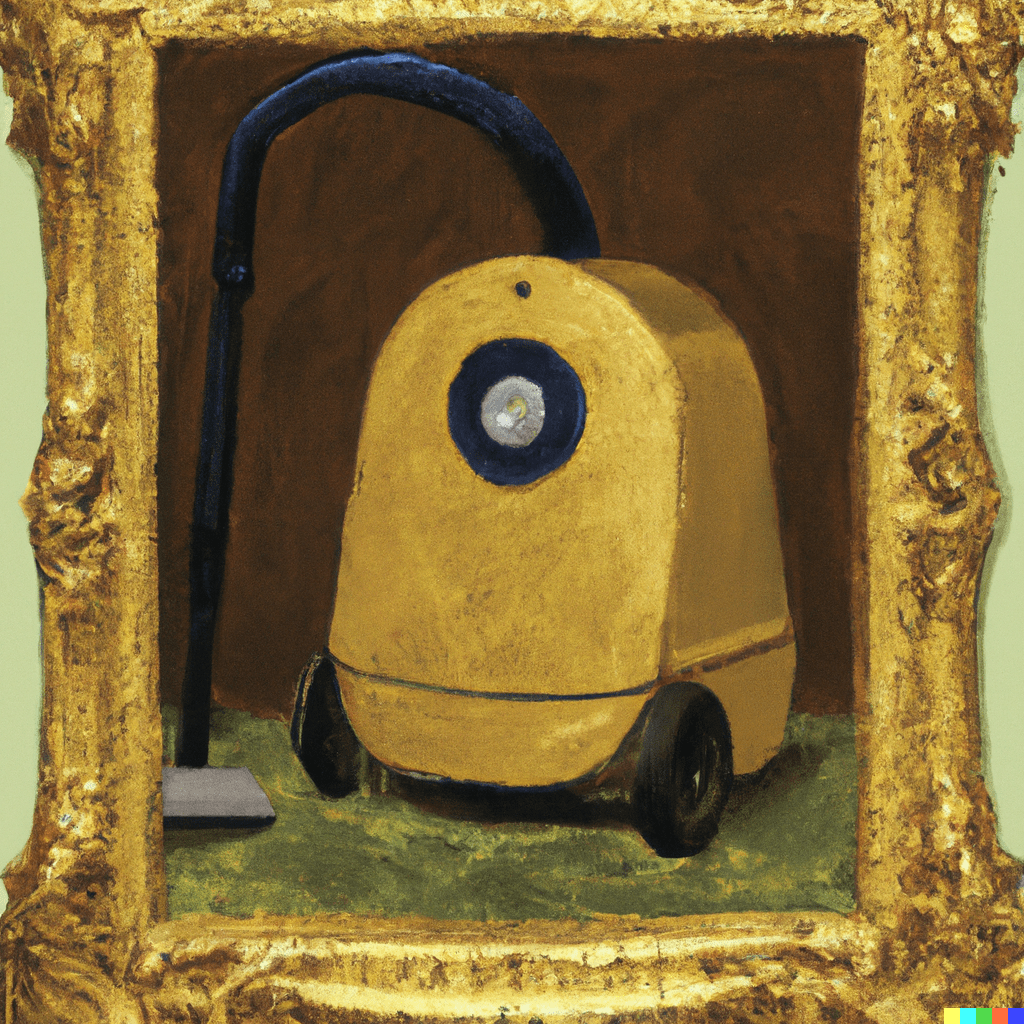
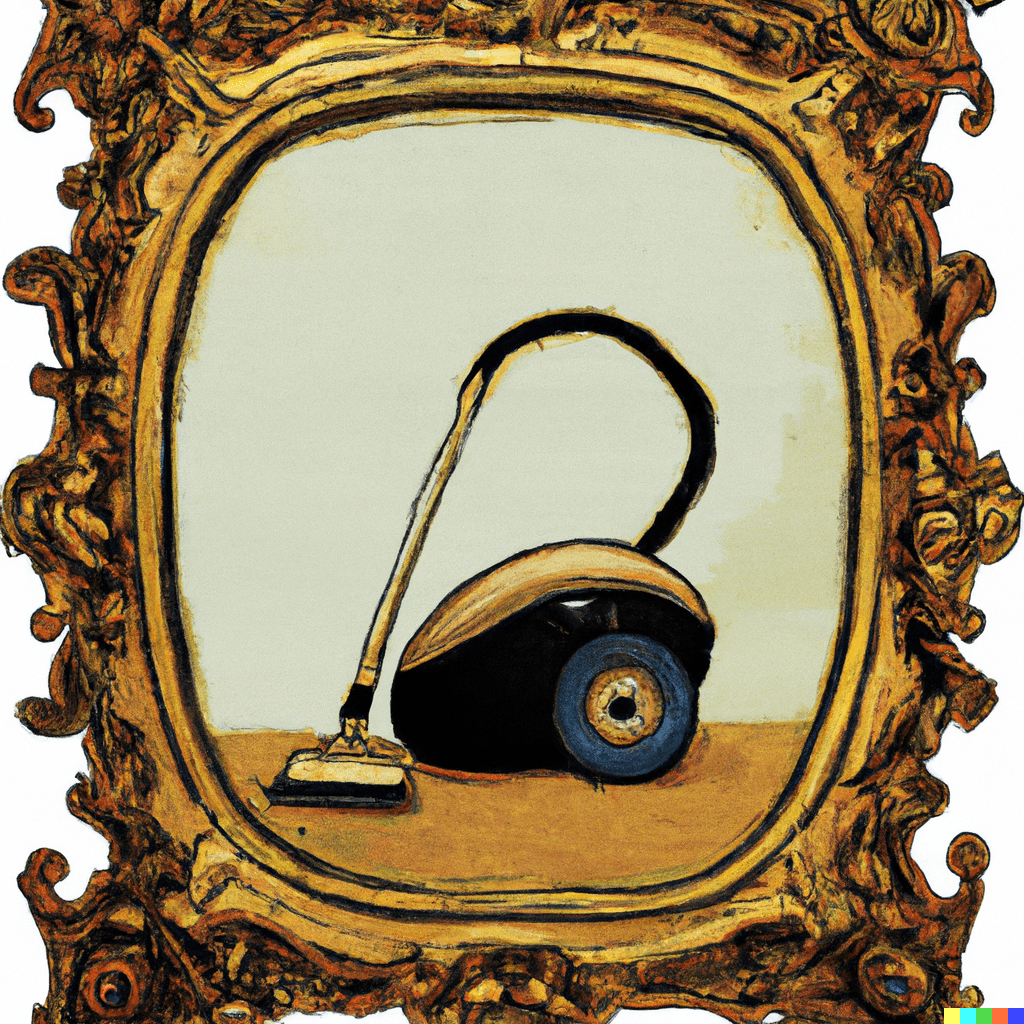

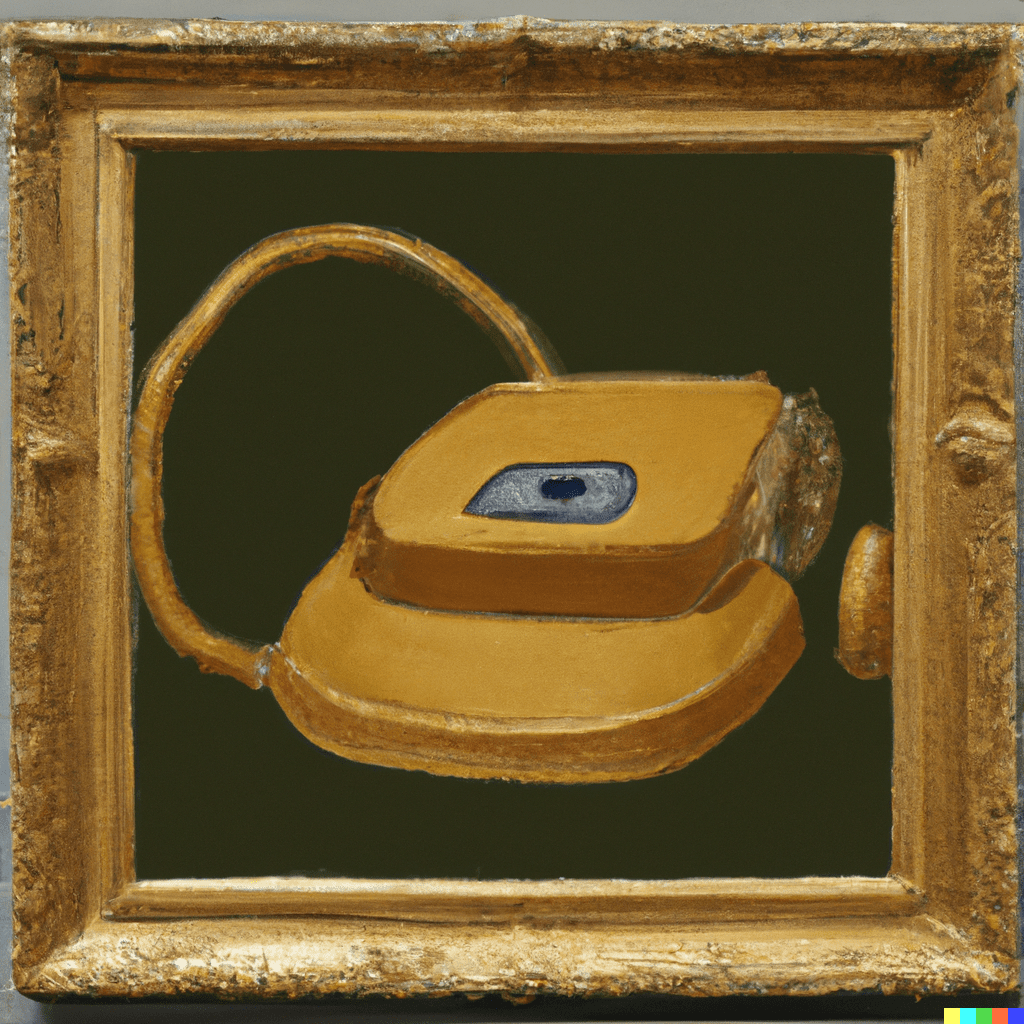
DALL·E 2 results for “A Vincent Van Gogh portrait painting of a Roomba vacuum in an ornate gold frame.” DALL·E/OpenAI/Matt Crummy
Inhibiting Wonder
I do not want to suggest that it is impossible to experience wonder today. To borrow Walker Percy’s felicitous phrasing, we may experience it, despite ourselves, by some “dim dazzling trick of grace.” But it seems to be clear that digital culture can inhibit rather than encourage the experience. How? First, by oversaturating our experience with digitally generated visual stimuli. Second, by dimming our perception of both the world and our neighbour. Third, by eliminating the contexts within which an experience of wonder might be more likely to occur. As we will see, these three are closely related and, in certain particulars, overlapping.
To the degree that wonder is often associated with vision, it’s worth exploring how changes to our visual environment might affect the experience of wonder. On the one hand, it is certainly the case that digital imaging can generate remarkable representations of the world and present us with visual perspectives that would be otherwise difficult if not impossible to come by. For example, anyone who has examined a high-resolution digital image of a painting knows just how much detail the technology can reveal, making even the texture of the brush strokes plainly visible. On the other hand, digital media also threatens to overwhelm our capacity to perceive what is wondrous by numbing us to visual stimuli.
Writing about developments in graphic design during the latter half of the nineteenth century, media scholars Johanna Drucker and Emily McVarish note that “whether in the guise of news or entertainment, advertisement or information, images saturated culture.” This was made possible by “new methods of image production,” which “succeeded each other rapidly, bringing unprecedented appearances to printed media.” These novel methods and techniques included “color lithography on a large scale, photographic detail on a smaller one, and ever more sophisticated techniques for reproducing tone and fine line work.” In the 1930s, Walter Benjamin’s famous essay “The Work of Art in the Age of Mechanical Reproduction” reckoned with the social and economic consequences of the further proliferation of images in photography and film. This is all to say that any claim about how digital imagery has saturated our experience should acknowledge a historical trajectory that dates back to at least the late nineteenth century, when there were public debates about what we might call visual pollution or the colonization of public spaces by all manner of printed images, mostly in the service of advertisement.
Passive and habitual consumption of digital stimuli distracts us from the kind of encounter with the world that elicits wonder.
But even as we acknowledge as much, it is still the case that the advent of digital technology marked another quantitative and qualitative leap in the production of images. Quantitatively, digital media dramatically increased the volume, availability, and ubiquity of these images. Consider, as a prosaic example, the difference between the handful of photographs a parent may have had in their wallet and the thousands they now store in their smartphone. Qualitatively, digital media transformed the nature of the images, including, for example, their quality and their manipulability. In this way, the proliferation of digital imagery swamps our sensory apparatus, which is increasingly desensitized to visual experience. Or perhaps it is better to say that the multitudinous cacophony of images we casually scroll through day after day trains us to be merely passive consumers of visual stimuli, disinclined to attend to the world with the care that may ordinarily be the condition of wonder. Wonder emerges when we apprehend the gratuitous particularity of a thing or a person, but digital media conditions us to skim predictable surfaces and to conform to predictable patterns. Under digital conditions, we may also come to suspect that most of the images we encounter are not simply mediated representations of the world but artificially manipulated images that may, in fact, correspond to no particular reality at all. The James Webb Space Telescope images I encountered were remarkable, but they were also carried by the same never-ending stream of visual stimuli that bears a flood of similarly remarkable but manufactured and manipulated images. I must work against the grain of my structured experience to register the significance of what I see.
Writing in the early days of manned space exploration, Hannah Arendt noted that recent progress in science, once translated into everyday life, “has brought with it a veritable avalanche of fabulous instruments and ever more ingenious machinery,” which might evoke a certain kind of amazement, but an amazement ultimately at our own ingenuity. “All of this makes it more unlikely every day,” Arendt warned, “that man will encounter anything in the world around him that is not man-made and hence is not, in the last analysis, he himself in a different disguise.” Or, as the playwright Max Frisch once quipped, technology is “the knack of so arranging the world that we don’t have to experience it.” Digital technologies have only accelerated this trajectory, which raises at least one critical question: Can the experiences of wonder arise from a technological environment built to rationalize, manage, and control the world? An environment that seeks to make the world uniform and predictable? If we think of wonder—not simply amazement or even awe—as being specifically tied to the gratuity and contingency of what is, then having our attention primarily directed toward what has been planned and fabricated would diminish the odds of experiencing it. In The Human Condition, Arendt warns against a techno-scientific spirit of “rebellion against human existence as it has been given, a free gift from nowhere (secularly speaking).” A gift that, in this spirit, a person may wish “to exchange, as it were, for something he has made himself.” In making this exchange, we might be unwittingly giving up the experience of wonder too.
One additional consequence of being inundated by visual stimuli on our devices (but also on the countless screens that surround us and on older analog surfaces as well) is that our perception of the non-human world—hues of the sinking sun, birdsong, glimmering fresh-fallen dew, a falling star—is obfuscated. The tiny spectacle that unfolds on our palms captures our attention, attention that cannot then be given to the world beyond our screen, our long-standing and even primordial fount of wonder. Attention, of course, has been the subject of much public debate and discussion in the age of digital media. Countless essays, articles, and books have been published decrying the consequences of ubiquitous digital distraction. But what is sometimes overlooked in such discussions is the question of what exactly we are being distracted from and why it matters. In response, we can note that passive and habitual consumption of digital stimuli distracts us from the kind of encounter with the world that elicits wonder. Seeing is a habit, and we can be habituated to see poorly.
In the absence of wonder, we may be in danger of forfeiting our humanity, and that of our neighbour, simply by failing to notice it.
But, perhaps more importantly, it is not just an encounter with the world that we might miss. We also shield ourselves from encountering our neighbour. We might intentionally turn to a screen to avoid making eye contact with those we pass on the street. Or, without intending it, we might never glance at the face of the restaurant server who takes an order from us. Even our encounters with those we love are often at the remove occasioned by a documenting device. We miss in these cases the opportunity to register the uniqueness of the human being before us, to recognize that there is no other creature in the universe quite like our neighbour. And, because so much of our self-understanding is the gift of the other, we may even miss how miraculous it is that we, in turn, exist. In the absence of such wonder, we may be, as Heschel feared, in danger of forfeiting our humanity, and that of our neighbour, simply by failing to notice it.
The Patient, Loving Eye
The philosopher and novelist Iris Murdoch once observed that “it is in the capacity to love, that is to see, that the liberation of the soul from fantasy consists.” She defines fantasy as “the proliferation of blinding self-centered aims and images.” Fantasy in this sense generates a “system of energy” that shapes our decisions and directs our will. In her view, “what counteracts the system is attention to reality inspired by, consisting of, love.”
Herein lies at least one answer to the problem of wonder in the age of digital media. The patient, loving eye is the precondition of wonder. It may be that we must work against the grain of our technological milieu—Murdoch insists that “as moral agents we have to try to see justly”—but if we can train ourselves to attend to the world with love, we may find that the gift of wonder lies waiting to be received. As Heschel says, “I did not ask for success; I asked for wonder. And You gave it to me.” The fruit of such an experience can be hard to predict. But in living up to our humanity and honouring that of our neighbour, we sow the seeds of a more humane culture.



